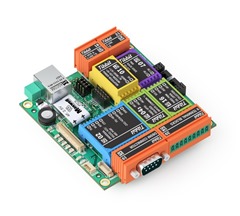 Micromanufacturing—using small manufacturing facilities to build small quantities of products—could be big news for e-readers if it comes about the way some of its boosters think.
Micromanufacturing—using small manufacturing facilities to build small quantities of products—could be big news for e-readers if it comes about the way some of its boosters think.
TechCrunch is carrying an article by Dmitry Slepov, managing director and co-founder of Internet-of-Things manufacturer Tibbo Technologies, discussing the potential for micromanufacturing to take off. He sees the necessary tools and parts increasingly becoming available in forms smaller factories could use, political pressures mounting to move manufacturing jobs back to the USA, and growing awareness that the inconvenience and piracy problems from dealing with China may be costing more than they’re worth.
It occurs to me that e-readers could be a big beneficiary of this kind of manufacturing, if it becomes widespread. Look at Michael Kozlowski’s 13” e-reader crowdfunding campaign. A major factor in its success is that Kozlowski was able to talk the OEM into a minimum order quantity of 60 units rather than the 500 of his earlier failed campaign. As a result, the campaign has currently funded to over $63,000 on a $42,000 goal, and still has a month left to run.
That kind of small manufacturing goal would be a lot easier to meet if the OEM in question was a micromanufacturer, without huge and costly factory facilities to support. Indeed, if a reader could be built from the sort of commodity parts that micromanufacturing suppliers can provide, it could effectively be “printed on demand” as the orders came in for it without any need for a production run at all.
We’re already seeing 3D printing being used to make (somewhat awkward) tablet display cases for computer kits like the Raspberry Pi. Micromanufacturing facilities could be the next step up from that, making devices that are considerably less bulky. Slepov’s company, Tibbo Manufacturing, already uses that sort of technology to make small electronics built with a modular framework. It’s not a great leap to see the same principles used for larger devices.
This could be important for e-ink readers a few years down the road, if their use dwindles to the point where there’s not sufficient demand to support full-sized production runs but there is sufficient demand for smaller runs of niche products. That may not be in the offing for a while, but micromanufacturers might well be fully ready by the time it is.

































